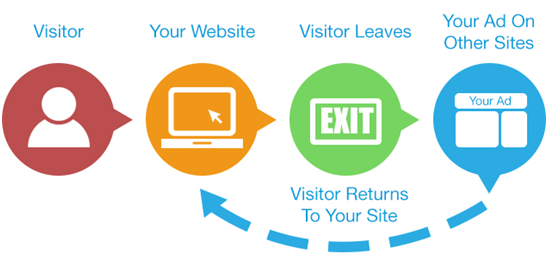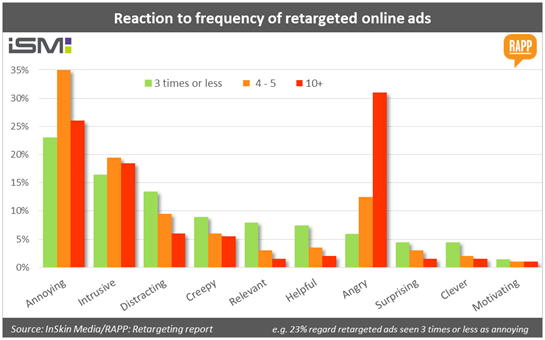Revive Marketing- Dead Sales Leads

Image source: http://www.marieclaire.com
Imagine you walk into a store with the intention of buying a new pair of jeans. You walk around and see a couple of pairs that look wearable, but they’re a bit too pricey so you decide to leave without buying anything.
“I’ll go check the other stores as well and if I don’t find anything better, I’ll come back and get these jeans”.
Happens quite frequently in real life, right? Well, the online world isn’t that different from reality, when it comes to shopping behaviour, and as a salesperson or marketer, you probably struggle to find viable and cost-effective solutions for improving conversion rates without spending a fortune on each client.
A 2% conversion rate is common for an e-commerce store, but it’s not satisfactory, and I bet your boss is pretty interested in the 98% of customers that are leaving the website without purchasing anything. As a digital marketer, you should come up with a solution for convincing and converting those visitors who have the intention to buy but leave and never return.
Here’s another scenario that will probably sound familiar to salespersons: you contact a couple of potential leads to discuss more your services, but one by one they turn your down because they’re not interested, or it’s not the best moment for a purchase.
Know the scary words marketers and sales agents use when referring to these potential clients?
Is there anything you can do to bring them back to life?
Yes, you can, and it’s called retargeting!
- Understanding the Value of Dead Sales Leads: Before we delve into the revival process, it's essential to recognize the value of dead sales leads. These prospects have already shown interest in your products or services, which means they are familiar with your brand. Reconnecting with them offers a higher chance of conversion compared to targeting entirely new leads.
- Intandemly's Proven Revive Marketing Techniques: Intandemly understands the art of revive marketing like no other. With a strategic blend of personalized outreach, tailored content, and timely follow-ups, we can reignite the interest of your dormant leads. Our expert team meticulously analyzes the reasons behind the lead's initial interest and crafts compelling messages to rekindle their curiosity.
- Crafting Irresistible Content: Content plays a pivotal role in revive marketing. It needs to be engaging, relevant, and valuable to your prospects. Intandemly helps you create a content strategy that addresses pain points, provides solutions, and showcases the unique selling points of your offerings. By presenting valuable content, you can re-engage your dead leads effectively.
- Personalized Outreach Campaigns: At Intandemly, we believe in the power of personalization. Generic mass emails won't cut it when it comes to revive marketing. Our team tailors each outreach campaign to suit the preferences and needs of individual prospects. By showing that you understand their specific requirements, you can break the ice and spark a renewed interest in your offerings.
- Leveraging Automation for Efficient Follow-ups: Consistency is key in revive marketing. Following up with dormant leads can be time-consuming, but Intandemly streamlines the process through automation. Our tools ensure that no lead slips through the cracks, and every potential opportunity is nurtured systematically until conversion.
- Analyzing Data and Iterating: Revive marketing is an evolving process. Intandemly analyzes data to measure the effectiveness of our strategies continually. We use real-time insights to optimize our approach, ensuring maximum results for your marketing efforts.
Think your lost leads are dead? You know nothing!
Until they die completely – unsubscribe or block your phone number-, dead leads are slightly alive, and they can be resurrected.
Retargeting or
remarketing is an online advertising technique that helps you bring visitors back to your website and convince them to take a profitable action – download, subscribe, purchase, and so on. The technique uses cookies to anonymously follow your visitors all over the web and to serve them specific ads at the right moment.

[Image source: http://redsarmy.com]
Unlike pop-ups and other intrusive marketing tools, retargeting tools place a harmless piece of code on your website, which is not noticeable to your visitors. The piece of code drops a cookie whenever someone visits your website, and that cookie notifies your remarketing provider to display certain ads to people who have previously interacted with your website.
Given that remarketing targets, users who are already familiar with your brand, the probability for those visitors to convert is higher, so the ROI from this marketing solution tends to be higher as well.
How the 3-step retargeting process works
In HubSpot’s
Beginner’s guide to retargeting ads, Dan Hecht defines two main types of retargeting:
pixel-based and
list-based.
Pixel-based remarketing redisplays your content to anonymous site visitors in a timely manner, being specific to a particular page of your site and behaviour-based.

[Image source:http://www.wordstream.com]
List-based remarketing, on the other hand, allows you to retarget visitors who have already given you their contact information and are on your email marketing list. To display the remarketing ads to these leads, you will have to upload the list to your retargeting platform – which can be a social network, and the platform will serve the ads only to them.
So the ideal process of remarketing goes like this:
1. A user visits your website and leaves without converting.
2. A browser cookie follows him, prompting the retargeting service to display a remarketing ad.
3. The user sees your retargeting ad and returns to your website, where he converts.
Remarketed visitors are 70% more likely to convert if the ads are displayed at the right moment, and if they aren’t served too often. But this is the ideal case, because in practice a visitor may return to your website several times without converting, or
may find the remarketing ads annoying,
especially if they’re displayed five times or more.

[Image source: http://www.inskinmedia.com]
Remarketing can be used for both awareness and conversions, awareness campaigns being usually created with pixel retargeting, while conversion campaigns are usually created with list retargeting, as they’re aligned with specific stages of the sales funnel.
When it’s a good idea to reactivate dead leads through retargeting
Retargeting should be perceived as a
separate marketing channel, and as any other marketing channel,
it requires segmentation in order to be effective. If you start with an audience that’s too broad, you may not get the best results from remarketing, as a lot of your website’s visitors are so-called “window shoppers” who don’t have the intention to purchase.
On the other hand, cart abandoners are perfect for retargeting, as they already expressed their intention to buy, and may need just a subtle reminder to finalize. Users who have previously engaged with your website by downloading free materials, watching videos or commenting on your content, but haven’t returned to purchase, are also a good target for remarketing and can be brought to life with this digital marketing strategy.
Offline leads who gave you their address during an event but showed no interest in your products or services when you contacted them via phone or email can be targeted with list-based remarketing ads. You can also try social media remarketing campaigns, but don’t forget to segment, as failing to do so can compromise your retargeting efforts.
Visitors who have spent time on your product pages should be remarketed differently than those who have just visited your homepage, and those with a higher bounce rate should be retargeted differently than those who have spent several minutes analyzing your offer. These users are in different stages in the purchase funnel, and the copy and design of your remarketing ads should address these differences.
I hope you enjoyed this article and wish you good luck with retargeting the dead cold leads! If you have questions, don’t hesitate to post them below, and if you know someone who could use these tips, feel free to share the article with them!
About the author
Andreea Macoveiciuc is a content strategist and marketer passionate about e-commerce, health and fitness. She offers content writing and management services to small and medium-sized businesses and loves developing content marketing strategies to help companies improve their online presence.




